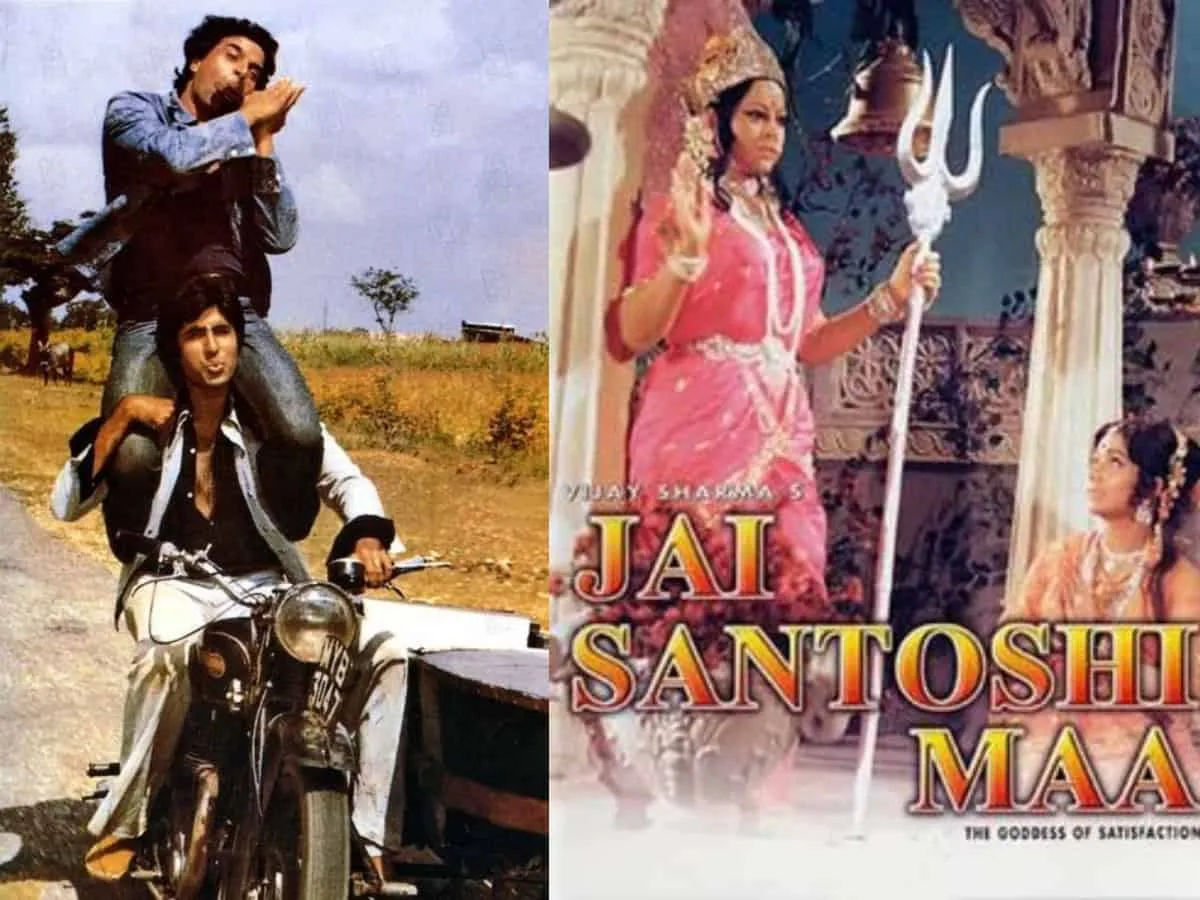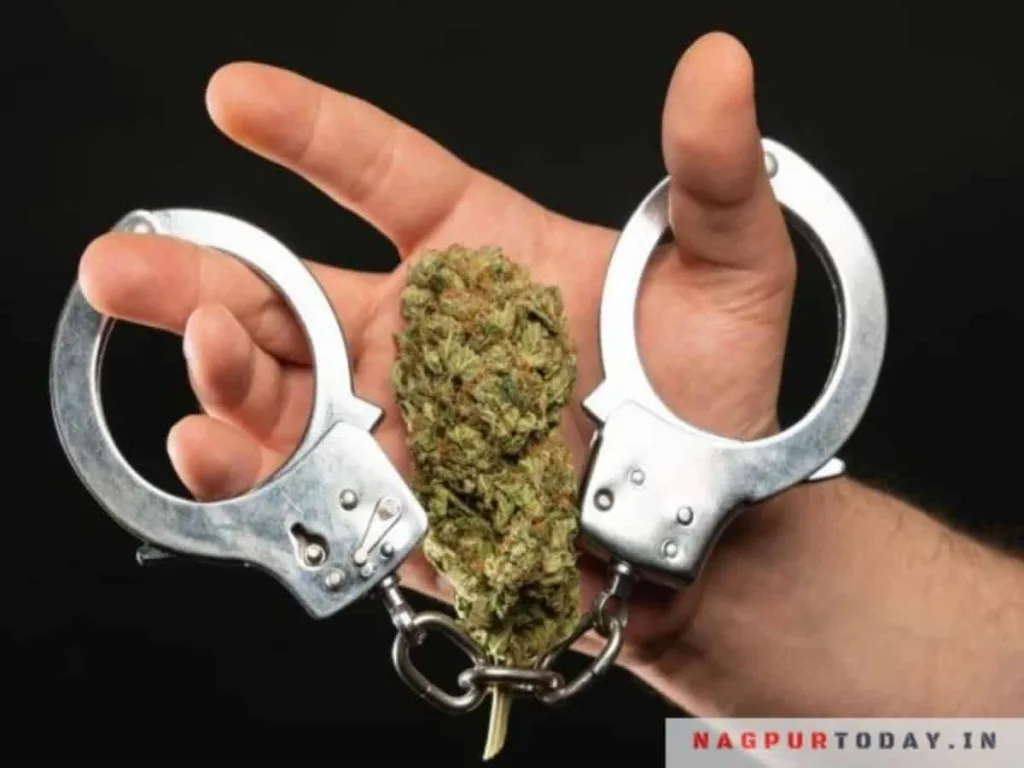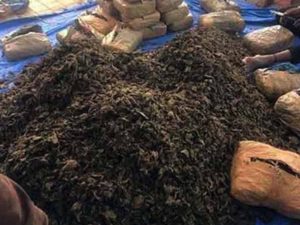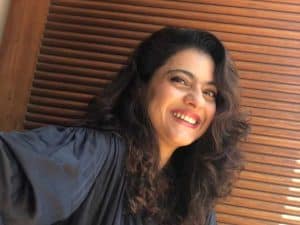By K. Sudhir Kumar
That was the pinnacle of the Golden Period for the Hindi Film Industry (HFI). It has now been 50 years (Golden Jubilee) since 1975, a year that, despite being associated with the Emergency period, remains unique in Hindi cinema history.
That remarkable year saw the simultaneous triumph of Sholay and Jai Santoshi Maa, while an innocent tale of love and ignorance, Geet Gata Chal, unexpectedly took the industry by storm.
1975 began with the rise of Amitabh Bachchan’s stardom in Deewaar, a film that became a turning point in his career. The year’s blockbusters further cemented Bombay’s status as the Mecca of Bollywood. Sholay ran for five straight years in Bombay’s Minerva talkies from 1975 to 1980.
The year 1975 is regarded as a phenomenal year in the HFI due to the sheer number of landmark films that left an indelible mark on Indian cinema. In Bombay’s film exhibition circuit, the year saw the maximum number of Silver Jubilee films being released, a rare feat in any era.
Most notably, Sholay and Jai Santoshi Maa reached the coveted 25-week mark in multiple theatres across the city, demonstrating their massive appeal despite being vastly different in genre and scale. While Sholay redefined action and storytelling with its grand cinematic spectacle, Jai Santoshi Maa, made on a shoestring budget with a relatively unknown cast, matched Sholay in terms of profitability, proving the power of devotional cinema.
Additionally, 1975 witnessed the rise of Amitabh Bachchan as the “Angry Young Man” with Deewaar, further solidifying the year as an unforgettable milestone in Indian cinema.
A film that runs for 75 weeks in a theatre is labelled a Platinum Jubilee Film. In Hyderabad, Sholay holds the distinction of being the first Platinum Jubilee film, achieving a staggering 76-week run at Ramakrishna 70mm. For six months, the current booking for the upper classes was never opened, as all tickets had already been sold through booking—such was the unprecedented craze for Sholay.
The experience of watching Sholay in those days can never be replicated. The booking queue stretched from the RK 70mm counter to the General Post Office (GPO). The iconic scene where Amitabh Bachchan flips a coin was so immersive that audiences felt as if the coin had landed right next to them.
In the true sense, Sholay was India’s first 70mm, stereophonic sound film. However, due to delays in obtaining the prints from London, its release at RK 70mm was postponed from August 15 to October 2, 1975. Sholay initially premiered with just six stereophonic sound prints, which were later increased. By the end of its long and historic run, it was reported that the print exhibited at RK 70mm remained undamaged—thanks to the superior quality projection equipment used there.
How the wheel of time moves! While Sholay was ruling the roost at Ramakrishna 70mm, Rajshri Films’ Geet Gata Chal was running to houseful shows for days, weeks, and months at the adjacent Ramakrishna 35mm, almost simultaneously, a sensational devotional film, Jai Santoshi Maa, featuring a completely new cast, defied all expectations. Made on a shoestring budget, it ran to jam-packed crowds at Dilshad Theatre. Jai Santoshi Maa also had an extended run of over a year in morning shows at Sagar Theatre, located behind RK 35 mm.
While these two films dominated the box office, Amitabh Bachchan solidified his status as the “Angry Young Man” with Deewar, which was screened at Ramakrishna 70mm. Many believe that Zanjeer (1973) was his breakthrough film, which is partially true, but it was Deewar that truly propelled him to superstardom, succeeding Rajesh Khanna. In between, he also had a notable cameo in Roti Kapda Aur Makaan.
Deewar ran to packed houses at RK 70mm before making way for the mother of all films—Sholay. With a historic 76-week run, Sholay became Hyderabad’s first Golden Jubilee, Diamond Jubilee, and Platinum Jubilee film, setting an unmatched benchmark in the city’s cinematic history.
Considering that Geet Gata Chal was a low-budget film featuring relatively unknown names like the boyish Sachin and the light-eyed beauty Sarika, its box office performance was remarkable. Running for an impressive 300 days at Ramakrishna 35mm, the film’s success was credible.
The audience profile varied across different theatres. At Sagar or Dilshad, a large portion of the audience comprised upper and middle-class women, while at RK 35mm, the ubiquitous upper and above-middle-class moviegoers filled the halls for Geet Gata Chal. Meanwhile, at RK 70mm—the only theatre in the city at the time charging ₹5 for balcony seats—both Deewar and Sholay attracted a mix of classes and masses alike.
Another film that made its mark in 1975 was Dayar-e-Madina. Much like Jai Santoshi Maa, it struck a chord with audiences and enjoyed a successful box office run, reaping a rich harvest despite its devotional theme. It opened with an Azaan by Qari Mohammed Mewati, followed by a lecture on the five pillars of Islam. The song “Madad Kijiye Tajdaar-e-Madina”, composed by Mohammed Shafi, remained etched in public memory. Cassette shops in the old city played Rafi’s version of the song to attract the faithful.
Meanwhile, the greatest music composer Shankar raised in Hyderabad (with his soul mate Jaikishen leaving to divine abode four years ago) losing supremacy roared again with his awe-inspiring score in Sanyasi as the old disciple Lata returned to render SJ-magic with her pious voice as Hema Malini set to establish herself as the symbol of Indian sensuality for generations to come. It was a clean silver jubilee hit in Royal talkies.
Two films, from the hit pair of Rishi Kapoor and Neetu Singh, Rafoo Chakkar and Khel Khel Mein were youthful hits that year with the later film enjoying a long run in Vikranti.
When Julie hit the screens in April 1975, it swept the youth off their feet with its bold theme. Despite the general unrest in the country at the time, youngsters eagerly flocked to theatres, captivated by Lakshmi’s charm. Adding to the film’s phenomenal success was Kishore Kumar’s soulful rendition of “Dil Kya Kare Jab Kisi Se” and “Bhool Gaya Sab Kuch”, beautifully complemented by Rajesh Roshan’s melodious composition. The film also featured the iconic Preeti Sagar song “My Heart Is Beating”, which became an instant hit, further elevating Julie’s musical legacy. Julie had a decent run in Navrang talkies, while the Telugu dubbing released a month later in Prabhat.
The year that marked the downfall of Rajesh Khanna had only one notable success for him—Prem Kahani, in which he starred alongside Shashi Kapoor, Vinod Khanna, and Mumtaz.
Meanwhile, Dulal Guha’s Pratigya, an action-comedy-drama featuring Dharmendra and Hema Malini, emerged as the third biggest hit revenue-wise and was released at the Ashok theatre. Another major success was Feroz Khan’s Dharmatma, a musical wonder powered by Kalyanji-Anandji’s mesmerizing tunes.
Following Apradh, where he debuted as a director, Feroz Khan solidified his reputation in the (HFI) as a synonym for style. He was a star who always held his own and made his presence felt. Paired with Hema Malini in Dharmatma, he created magic on screen, and who can forget the timeless song “Kya Khoob Lagti Ho”?
It was the year of Gulzar’s Aandhi, Suchitra’s looks reminiscent of Indira Gandhi. Aandhi was released on February 13, 1975, during the emergency and amidst controversy, as rumours abound that it was based on the life of the Prime Minister, Indira Gandhi, and soon it was banned to be later re-released after the emergency.
Shakti Samantha’s musical hit Amanush, Hrishikesh Mukherjee’s Chupke Chupke and Mili, Basu Chatterjee’s Choti Si Baat were not only classics but also successful at turnstiles. Ashok Kumar and Shashi Kapoor’s Chori Mera Kaam released in the Navrang theatre was also successful. The other hits include youthful Amitabh’s Zameer, Gulzar’s Khushboo.
1975 was truly a wonderful and trend-setting year for the Hindi film industry. It witnessed an unprecedented blend of blockbuster action, devotional success, and musical brilliance, setting new benchmarks in Indian cinema.







